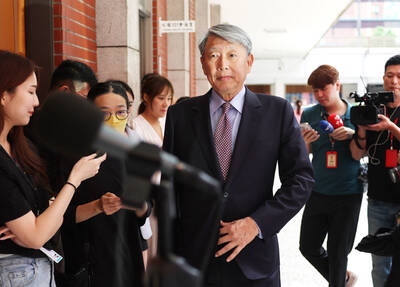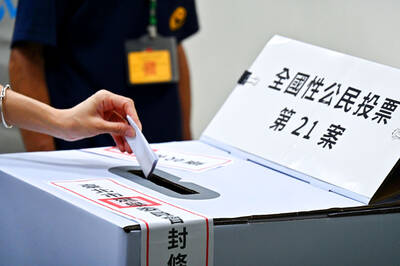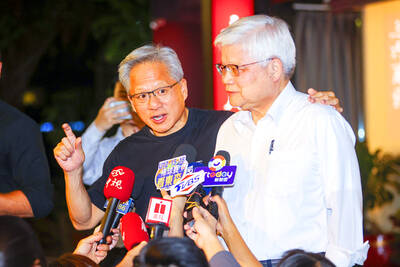Internet search leader Google Inc is testing technology that allows people using its mobile mapping service to identify their location even if their phones are not equipped with a global positioning system (GPS) receiver.
The new tracking feature introduced Wednesday is being touted as an added convenience because it will enable people on the go to skip the task of typing a starting address on a mobile handset's small keys when they turn to Google's maps for guidance.
Using the technology, dubbed "My Location," requires simply pressing zero on a mobile handset equipped with the new software. The sender's location shows up as a blue dot on Google's mobile maps.
The tracking system isn't set up to collect a user's phone number or any other personal information that would reveal a person's identity, said Steve Lee, product manager for Google's mobile maps. As a safeguard, the feature can be turned off at any time by simply clicking on a link in the help menu.
Those assurances probably will alleviate privacy concerns raised about the new service, analyst Greg Sterling of Sterling Market Intelligence aid.
After trying out "My Location" on a Blackberry device, Sterling predicted people would embrace it. He called it "an incremental improvement but still meaningful."
Unlike GPS, Google's tracking feature also works indoors. "My Location" also drains less power from a phone's battery than a GPS receiver does.
On the downside, Google's service isn't as precise as GPS. In most instances, Google hopes to get within 400m to 5km of a user's location -- close enough to provide helpful "neighborhood-level" information, Lee said.
The database that identifies the location of a mobile phone is still under construction, so the service still sometimes draw a blank. The company expects to fill in the holes as more people use the service, Lee said.
The database currently spans more than 20 countries, including US, much of Europe, Australia, New Zealand, the Russian Federation and Taiwan. It doesn't yet work in China or Japan.
By knowing more about a mobile phone's location, Google conceivably could make more money displaying ads from nearby businesses hoping to lure in more customers. The Mountain View-based company currently doesn't plan to show ads on mobile maps but may in the future, Lee said.
Already the owner of the most lucrative advertising network on the Internet, Google eventually hopes to do a better job of mining profits from the mobile Web.
To help realize that goal, Google plans to introduce a new mobile software package called Android next year to make its online services more accessible to people while they're away from computers at home or the office.
Although a growing number of smartphones come with GPS receivers, Google estimates that about 85 percent of mobile handsets now in use don't have the satellite-powered technology.
Google's alternative will work on most smart phones, including the Blackberry and the latest generation of Nokia handsets. But it's still not compatible with the iPhone, Motorola Q, Samsung Blackjack and Palm Treo 700w and other models.

CHIPMAKING INVESTMENT: J.W. Kuo told legislators that Department of Investment Review approval would be needed were Washington to seek a TSMC board seat Minister of Economic Affairs J.W. Kuo (郭智輝) yesterday said he received information about a possible US government investment in Taiwan Semiconductor Manufacturing Co (TSMC, 台積電) and an assessment of the possible effect on the firm requires further discussion. If the US were to invest in TSMC, the plan would need to be reviewed by the Department of Investment Review, Kuo told reporters ahead of a hearing of the legislature’s Economics Committee. Kuo’s remarks came after US Secretary of Commerce Howard Lutnick on Tuesday said that the US government is looking into the federal government taking equity stakes in computer chip manufacturers that

POWER PLANT POLL: The TPP said the number of ‘yes’ votes showed that the energy policy should be corrected, and the KMT said the result was a win for the people’s voice The government does not rule out advanced nuclear energy generation if it meets the government’s three prerequisites, President William Lai (賴清德) said last night after the number of votes in favor of restarting a nuclear power plant outnumbered the “no” votes in a referendum yesterday. The referendum failed to pass, despite getting more “yes” votes, as the Referendum Act (公民投票法) states that the vote would only pass if the votes in favor account for more than one-fourth of the total number of eligible voters and outnumber the opposing votes. Yesterday’s referendum question was: “Do you agree that the Ma-anshan Nuclear Power Plant

Chinese Nationalist Party (KMT) lawmakers have declared they survived recall votes to remove them from office today, although official results are still pending as the vote counting continues. Although final tallies from the Central Election Commission (CEC) are still pending, preliminary results indicate that the recall campaigns against all seven KMT lawmakers have fallen short. As of 6:10 pm, Taichung Legislators Yen Kuan-heng (顏寬恒) and Yang Chiung-ying (楊瓊瓔), Hsinchu County Legislator Lin Szu-ming (林思銘), Nantou County Legislator Ma Wen-chun (馬文君) and New Taipei City Legislator Lo Ming-tsai (羅明才) had all announced they

Nvidia Corp CEO Jensen Huang (黃仁勳) yesterday visited Taiwan Semiconductor Manufacturing Co (TSMC, 台積電), as the chipmaker prepares for volume production of Nvidia’s next-generation artificial intelligence (AI) chips. It was Huang’s third trip to Taiwan this year, indicating that Nvidia’s supply chain is deeply connected to Taiwan. Its partners also include packager Siliconware Precision Industries Co (矽品精密) and server makers Hon Hai Precision Industry Co (鴻海精密) and Quanta Computer Inc (廣達). “My main purpose is to visit TSMC,” Huang said yesterday. “As you know, we have next-generation architecture called Rubin. Rubin is very advanced. We have now taped out six brand new